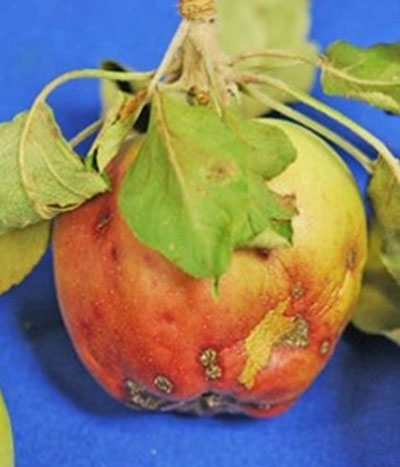Apple Scab
Searcy, Ark. –

Photo by Sherrie Smith, University of Arkansas System Cooperative Extension Service
Apple scab, caused by Venturia inaequalis, is the most economically important disease of apples in the United States. Severe crop losses may occur in areas with wet, cool springs.
Scab lesions may occur on fruit, leaves, blossoms, petioles, and peduncles, with the most obvious symptoms on the leaves and fruit. Lesions are often found first on lower leaves, and as leaves unfurl both sides may become infected.
What does apple scab look like?
The spots are velvety brown to olive green with feathery edges. As the lesions age and become hardened, leaf malformation may occur. Leaves that become completely covered with lesions yellow, shrivel, and fall from the tree prematurely. Infected fruit gets the same lesions and can become deformed and cracked.
The fruit lesions eventually become dark brown to black circular rough spots.
How do I treat apple scab?
Applications of Fruit tree sprays every 7-10 days should be made from the tight cluster stage until terminal shoot growth ends in midsummer.
All fallen leaves and fruit should be cleaned up.
Dormant pruning of infected terminals aids in removing primary inoculum but is time consuming and can affect yield. Plant resistant cultivars, when possible.
This disease also affects crabapples. For ornamental trees, fungicides containing chlorothalonil are effective if started early.
By Sherri Sanders
County Extension Agent - Agriculture
The Cooperative Extension Service
U of A System Division of Agriculture
Media Contact: Sherri Sanders
County Extension Agent - Agriculture
U of A Division of Agriculture
Cooperative Extension Service
2400 Old Searcy Landing Road Searcy AR 72143
(501) 268-5394
ssanders@uada.edu